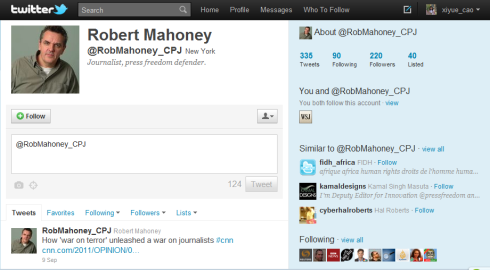My product is for three kinds of people, journalists, journalism students and audiences who curios journalists. In my area of interest, I deliver the latest situation for journalists who are at risks and what the risks are as well as how to keep themselves safe. What’s more, I also alert the journalism area such as media outline to concentrate on the risks to journalists. So, I think it has potential market because of the huge influence of mass media.
What I expect to the money is being collected in the journals or attract main stream media to create my own column to discuss the risks to journalism and to common the latest situation for journalists, such as war correspondents, foreign correspondents, etc. I am not expecting to get the money through advertisement, because there is no particular attraction for ads.
I think the only competition to my interest of area will be the scholars, they will have large among of research to deliver their point of view. But I am confident to my topic, because as an online blog, I provide links to the sources and integrate the information. It is more convenient for the audiences to open the link and get the information as soon as possible. And my blogs and topic will be easy researched online. So, it is also my competitive advantage.
To sum up, I am very confident with my area of interest and it has a potential market.
 Photo: EPA
Photo: EPA





